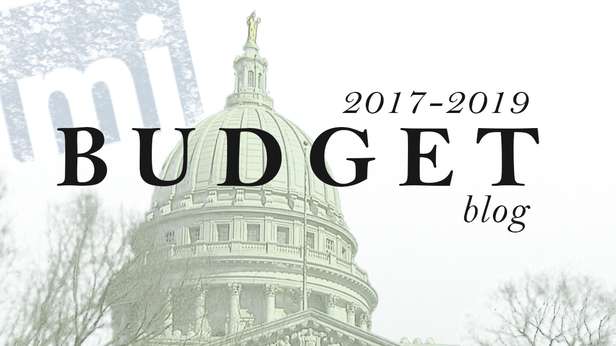
June 15, 2017
[Madison, Wis…] The Joint Finance Committee followed through on its plan to reject Gov. Scott Walker’s self-insurance proposal on Thursday, instead directing the Group Insurance Board (GIB) to come up with $63.9 million in savings within the current health insurance system.Walker’s budget proposed the switch to self-funded health insurance for state employees, where the state would collect premiums and pay claims itself, rather than go through the current network of private HMOs. GIB estimated the switch would have saved $60 million over the biennium.
JFC has questioned the proposal for months, and formally rejected the self-insurance contracts on a 16-0 vote without discussion at its executive session Thursday. Instead, the committee adopted a motion directing GIB to work within the existing network of HMOs to find slightly more savings than Walker’s proposal.
“The governor originally tied $60 million in savings to self insurance. As I mentioned the ACA was miscalculated, so that’s another $3.9 million. So the net savings that we come up with today will be $63.9 million,” JFC co-chair Rep. John Nygren (R-Marinette) told reporters before JFC gaveled in.
.@rep89 says changes to state employee health insurance will hold cost/premium increases to 10% or less. #wibudget pic.twitter.com/VJkouP0x00
— MacIver Institute (@MacIverWisc) June 15, 2017
Part of the savings would be achieved by forcing GIB to draw down its reserves by $25.8 million in general purpose revenue (GPR) over the biennium. JFC co-chairs Sen. Alberta Darling (R-River Hills) and Nygren have been critical of how much money GIB has been setting aside in reserves, saying keeping excessive cash in reserves leaves savings on the table.

“That means we haven’t been realizing the savings that could have been there to both state agencies and to the employees themselves,” Nygren said.
The insurance board would also have to find $22.7 million GPR by negotiating further savings within existing plans.
In addition, GIB would have to re-structure plans offered to state employees, increasing the number of health plan tiers from three to five and emphasizing Consumer Driven Health Plans, which have higher deductibles but also are paired with tax-advantaged health savings accounts.
Rep. Katrina Shankland (D-Stevens Point) claimed offering more high-deductible options would force people to forego life-saving medical care like breast exams.
Nygren shot back, saying Shankland “should be ashamed” of her over-the-top rhetoric. He cited his own high-deductible plan that saves $2,400 a year in reduced premiums. That, combined with pre-tax contributions to his HSA, more than cover his out-of-pocket costs.
Nygren to Shankland: "You should be ashamed" of dishonest, over-the-top rhetoric about CDHPs. https://t.co/Tiurzy02Jw
— MacIver Institute (@MacIverWisc) June 15, 2017
Under the JFC motion, any cost increases from plan design changes would be capped at 10 percent. That cap would apply to increased premiums and any out-of-pocket costs in 2018 and 2019. The cap ensures state employees, who currently cover just 10.8 percent of their own medical costs, will continue to enjoy generous taxpayer-funded benefits.

Rep. Mary Felzkowski (R-Irma), a health insurance agent by trade, added that consumer-driven health plans are designed to give employees more control over their health care dollars. Employers have an incentive to keep their employees healthy and productive, she said. “Even if government doesn’t regulate it…it’s what employers do.”
After JFC’s unanimous vote to reject self-insurance, Rep. Gordon Hintz (D-Oshkosh) called Walker’s proposal a “scam,” creating a seemingly rare moment of unity between JFC’s leaders and Walker.
“Self insurance in and of itself is not a bad thing or a bad idea,” Nygren said.
Darling said she doesn’t think the governor was trying to “pull one over on us.” She said she just thinks “this is the wrong time for us to be making shifts in the marketplace.”
In another notable moment of comity with the governor, JFC also voted Thursday to finally phase out the state’s Local Government Property Insurance Fund. The fund, which competes with the plethora of private sector insurers, dates back to 1911 when private insurance was literally still in the horse and buggy days and local governments couldn’t find insurance coverage for their property.
Times change, and in this case, government actually changed, too. The LGPIF will be a thing of the past by the time the books close on the 2017-19 biennium.